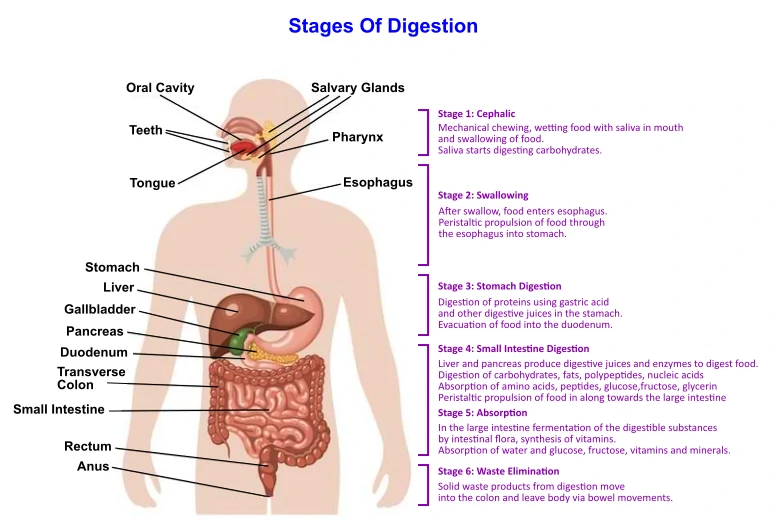Model Of Matter - Atoms And Molecules
Understanding the Model Of Matter, including Atoms And Molecules, in Secondary 1 Science is crucial as it forms the foundation of science, explains properties of substances, and is essential for comprehending chemical reactions, technological applications, and fostering critical thinking skills.
In this article, the following are the objectives that will be discussed.
- Describe what an atom is made up of.
- State the location, relative charges and relative masses of the subatomic particles.
- Describe molecules as molecules of elements and molecules of compounds.
What is an Atom?
Atoms are the basic building blocks of matter, consisting of a nucleus containing protons and neutrons, with electrons orbiting around the nucleus. They are the smallest units of an element that retain the properties of that element.
An atom is the smallest particle of an element that has the properties of the element.
All matter (e.g. solid, liquid and gas) is made up of atoms.
All atoms of the same element are identical. However, atoms of one element are different from atoms of another element.
Size of an Atom
What is the size of an atom?
Atoms are tiny, with diameters typically around \(0.1\) nanometers \(( 1 \times 10^{-11} \text{ meters})\). However, their nucleus, containing protons and neutrons, is much smaller, about \(\displaystyle{\frac{1}{10,000}} \text{th}\) the size of the atom. Most of an atom's volume is empty space, occupied by the electron cloud.
An atom has an average diameter of \(1 \times 10^{-11} \text{ m}\).
Let’s compare the size of an atom to other substances!
- A pencil
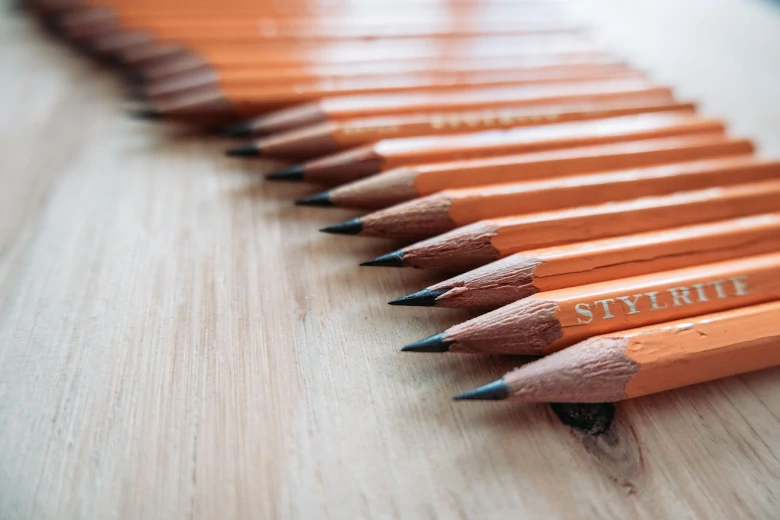
Image Credit: unsplash - David Perkins
Diameter of a pencil lead: \(1 \times 10^{-2} \text{ m}\)
- Red blood cell
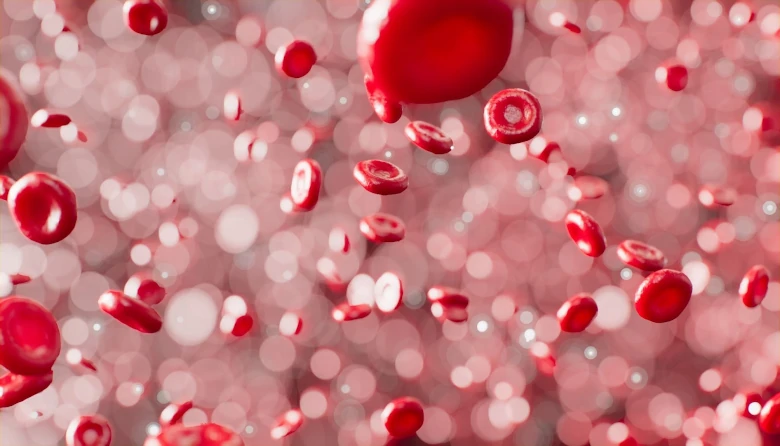
Image Credit: unsplash - ANIRUDH
Diameter of a red blood cell: \(1 \times 10^{-5} \text{ m}\)
- Dust particle
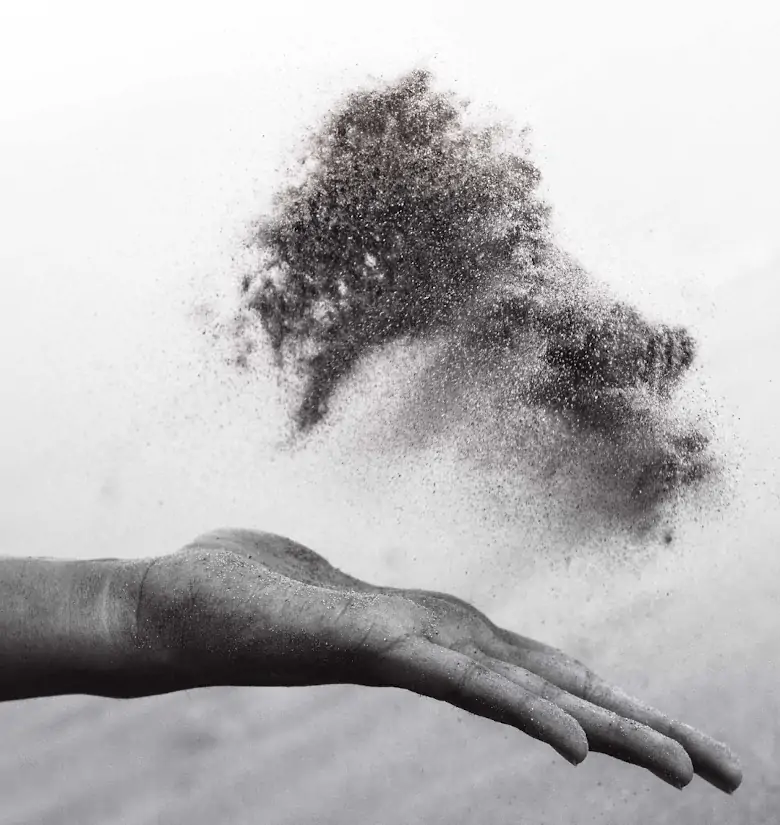
Image Credit: Kunj Parekh - unsplash.com
Diameter of a dust particle: \(1 \times 10^{-7} \text{ m}\)
How are elements represented?
Atoms of the elements are represented using chemical symbols. This can be observed in the Periodic Table shown below.
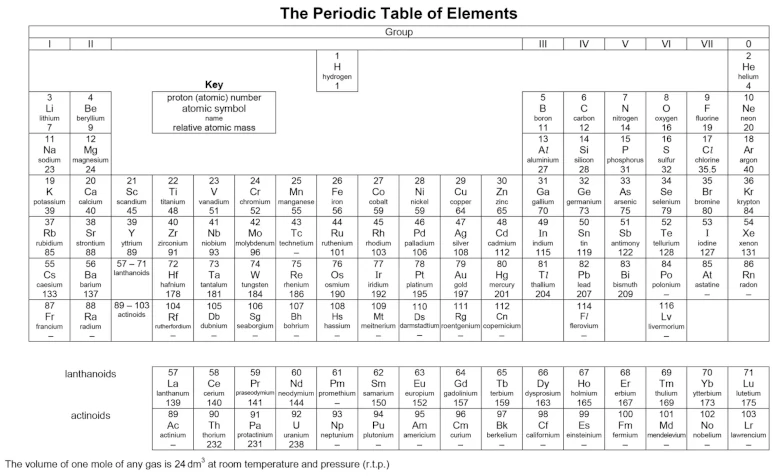
Image Credit: SEAB
Structure Of An Atom
What is an atom made up of?
An atom is made up of subatomic particles:
- protons;
- neutrons; and
- electrons.

Properties Of Subatomic Particles
The table below shows the location, relative mass, and relative charge of the subatomic particles in an atom.
| Location | Relative Mass | Relative Charge | |
|---|---|---|---|
| proton | nucleus | \(1\) | \(+1\) |
| neutron | nucleus | \(1\) | \(0\) |
| electron | electron shell | \(\displaystyle{\frac{1}{1840}}\) | \(-1\) |
Practice Questions
Here are some questions for us to look into in the first part of this article.
Question 1:
Which of the following describes an atom?
- An atom can be divided into smaller parts without losing its properties.
- An atom has negligible mass.
- An atom is densely packed with protons and neutrons only.
- An atom is too small to be seen by the naked eye.
Answer :
(D) An atom is too small to be seen by the naked eye.
Explanation:
An atom cannot be divided into smaller parts without losing its properties.
An atom has mass, which mainly comes from the protons and neutrons.
An atom is densely packed with protons, neutrons and electrons.
An atom can only be observed through an electron microscope.
Question 2:
Which of the following is found moving around the nucleus in fixed orbits?
- electrons
- neutrons
- nucleus
- protons
Answer:
(A) electrons
Explanation:
Protons and neutrons are found in the nucleus of an atom. Electrons are found orbiting around the electron shells surrounding the nucleus.
Question 3:
Which of the following has the smallest relative mass in an atom?
- electron
- neutron
- nucleus
- proton
Answer:
(A) electron
Explanation:
An electron has a relative mass of \(\displaystyle{\frac{1}{1840}}\) while a proton and a neutron have a relative mass of 1 each.
Question 4:
Which of the following is not a subatomic particle?
- electron
- molecule
- neutron
- proton
Answer:
(B) molecule
Explanation:
An atom is made up of subatomic particles, which consist of protons, neutrons and electrons.
Molecule
What is a molecule?
Atoms are the basic building blocks of matter, consisting of a nucleus containing protons and neutrons, with electrons orbiting around the nucleus. They are the smallest units of an element that retain the properties of that element.
Molecules, on the other hand, are formed when two or more atoms chemically bond together. These bonds can be covalent, where atoms share electrons, or ionic, where atoms transfer electrons to each other. Molecules can consist of atoms of the same element (like diatomic molecules such as O2 or N2) or different elements (like water, H2O, which consists of two hydrogen atoms and one oxygen atom).
A molecule is made up of two or more atoms chemically combined together.
Examples of molecules that are present around us are:
- Water (H2O)
- Carbon Dioxide (CO2)
Classification of Molecules
Molecules can exist in two kinds:
- molecules of elements; and
- molecules of compounds.
What is a molecule of an element?
A molecule of an element is made up of a fixed number of one type of atom chemically combined together.
Examples of molecules of elements:
- hydrogen (H2)
- oxygen (O2)
- ozone (O2)
What is a molecule of a compound?
A molecule of a compound is made up of a fixed number of two or more different atoms chemically combined together.
- water (H2O)
- ammonia (NH3)
- carbon dioxide (CO2)
- methane (CH4)
Practice Questions
Here are some questions for us to look into in the second part of this article.
Question 1:
Which of the following correctly describes a molecule?
- A molecule is made up of one type of atom only.
- A molecule is made up of two or more different types of atoms only.
- A molecule is made up of the same type of atoms only.
- A molecule is made up of the same or different types of atoms.
Answer:
(D) A molecule is made up of the same or different types of atoms.
Question 2:
Which of the following correctly describes a molecule of an element?
- A molecule of an element consists of a fixed number of more than one type of atom chemically combined.
- A molecule of an element consists of a fixed number of more than one type of atom not chemically combined.
- A molecule of an element consists of one type of atom chemically combined.
- A molecule of an element consists of one type of atom not chemically combined.
Answer:
(C) A molecule of an element consists of one type of atom chemically combined.
 SG
SG  VN
VN 

